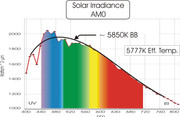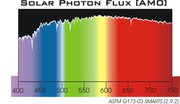Hi Joe,
Is there any data on other solar systems in the Milky Way that define the angle between their local ecliptic and the ecliptic of the Milky Way? In order for us to get maximum view of exoplanets transiting in front of their local sun, doesn't their solar system ecliptic need to be parallel to the Milky Way ecliptic? Our solar system ecliptic is at about 60 degrees to the Milky Way ecliptic so wouldn't only a tiny portion of the Milky Way be able to see any of our solar system planets transiting in front of the Sun? Are there other possible explanations for the transits we observe in other systems, such as sun spots?
thanks
Hi mmm. Stars and their surrounding planets can form in any orientation, randomly. As you point out, to see a transiting planet (that is the planet is between its sun and us, and we see it as it moves across the disk of the star), we (Earth, planet, and its sun) need to be aligned. Even though planet orientation is random, there are lots of stars/planets, so we can potentially see lots of transits. (Note, the ecliptics don't need to line up, we just need to see the orbit edge-on, in whatever orientation that is.)
Note that, for the vast majority of the planetary systems, we don't actually SEE the planet moving across the star. Rather we measure the dip in the star's brightness as the transiting planet blocks some of the star's light from our view. We can get time information too: The dip in brightness lasted 3 hours, or whatever, which is, of course, the time it took for the planet to move across the disk of the star from our vantage point. Measuring that time can give us orbital information about the planet. It's really an interesting way to learn a lot about these exoplanetary systems.
Now stars vary in brightness for many reasons that have nothing to do with transiting planets, including, as you point out, because of star spots. That's why we need to understand the host star as well as possible: Is that type of star known to have lots of star spots, how does its brightness vary (level of brightness and over how long)? Etc. Then we attempt to eliminate all the non-planet possibilities. One way is by observing multiple transits: If they are always exactly the same length of time, and the same amount of brightness reduction, and they occur regularly, the likelihood the brightness variation is caused by a transiting planet is increased. For example, star spots would not cause brightness variations of exactly the same amount and length of time and occurring every 6 months (say).




